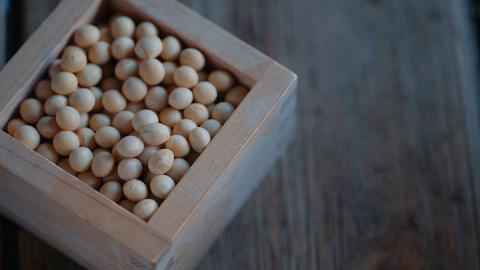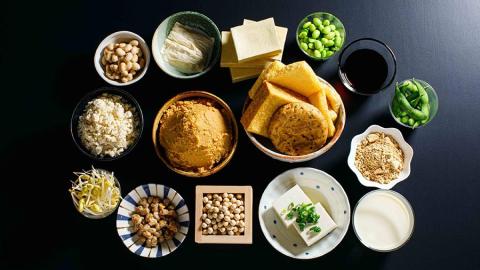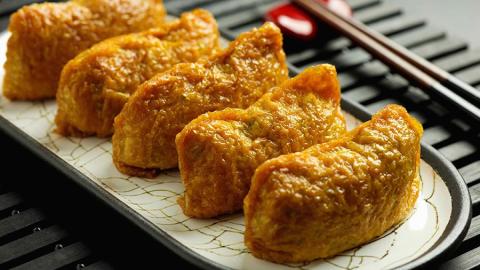
What are the most iconic Japanese foods? Alongside sushi and ramen, most people would quickly name tōfu high on the list. While it comes in many forms, the classic white cube? of tōfu is instantly recognizable as a staple across Asia that plays a key role in Japanese cuisine and culture. In recent decades, tōfu has become a global phenomenon, and despite its lack of strong flavor, its history is hardly bland.
Tōfu is believed to be originated in China over 2,000 years ago, attributed to Prince Liu An of Anhui province, though many assume it was discovered accidentally when some long-ago chef was boiling ground soybeans and added impure salt, inadvertently curdling it. Regardless of its inventor, tōfu became a well-known source of meatless protein, and was first brought to Japan in the Nara period (710-784 AD), probably by Buddhist monks for whom it was an ideal ingredient in a meatless diet. Unsurprisingly, it became an essential part of shōjin ryōri, or Buddhist temple cuisine (see link to previous events on shōjin ryōri), but outside of temples, tōfu was considered a food for elites and samurai up until the Edo period (1603-1868 AD), when it spread to the general public as an everyday staple. By 1782 in the era of flourishing print culture, one of Japan’s bestselling books was “Tōfu Hyakuchin”, a cookbook listing 100 recipes for preparing tōfu.

This expansive list from centuries ago hints at tōfu’s great versatility that gives rise to nearly countless variations in form, preparation, and use in different dishes. All tōfu starts with soybeans that have been dried, crushed, boiled, and then separated from the pulp to leave the “milk” behind. That soybean milk is then “curdled” by the addition of calcium or magnesium salt, and the curds are then strained and pressed into blocks, in a technique reminiscent of making cheese (leading to some early confusion by Westerners that tōfu was a type a cheese). But subtle differences in process result in distinct textures and consistencies.

For instance, two of the classic types in Japan are “cotton” (momen) tōfu, which is relatively firm, and silken tōfu (kinu-dofu), which is softer and custard-like, but tōfu can even be freeze-dried (koyadofu), fermented (tōfuyo), or deep-fried (aburaage and atsuage), to name a few. Then there are the numerous ways tōfu is used in cooking, from inclusion in miso soup, to inarizushi (deep-fried “pouches” of aburaage stuffed with rice), to hiyayakko, a simple block of chilled tōfu with accents of ginger, bonito flakes, green onions, and a splash of soy sauce.

From the Edo period on, tōfu gained a place in Japanese tradition and pop culture, from the enduring myth that kitsune, foxes who have long been believed to be messengers of Inari, the god of the rice harvest, love deep-fried tōfu, to the mischievous supernatural entity known as Tōfu-kozō, or “Tōfu Boy”. Depicted as a child dressed like a tōfu seller with a wide-brimmed hat, Tōfu-kozō is one of Japan’s yōkai or folkloric creatures (see link to other content on yōkai), and was said to wander back alleys at night, a tray of tōfu in hand to offer unsuspecting passersby, who might bite into the snack only to realize it’s moldy – a mostly harmless prank. While Tōfu-kozō emerged into the public imagination in the 1700s, more recently the designer Shinichirō Kitai (maker of DEVILROBOTS) created “To-Fu Oyako”, a cartoonish character with a tōfu block for a head, who has become a cult figure adorning toys, books, and games.
Today, tōfu is known around the world for its health benefits and has been integrated into countless cultures, cuisines and lifestyles. But while many Asian food staples gained popularity in the West centuries ago (consider noodles and tea), tōfu took a bit longer for its moment on the world stage – perhaps because its flavor is too subtle for some consumers, or because it requires some knowledge and skill to cook well with it. With the explosion of the “counterculture” in the 1960s in the US and Europe, however, many people began exploring vegetarianism and discovered tōfu as an inexpensive, versatile, protein-rich replacement for meat and other animal products. In recent years, it has more fully entered the mainstream due to a cultural emphasis on healthy eating, and the spread of “foodie” interests that has increased knowledge on the many ways to cook with tōfu. In an era of climate change, when plant-based protein is even more essential, it’s clear that tōfu will play a key role in global diets. Luckily, as Japan’s long tōfu tradition shows, the humble white cube is not only healthy and eco-friendly, but delicious too.




